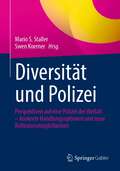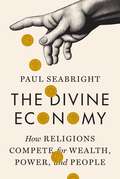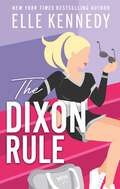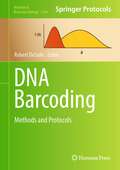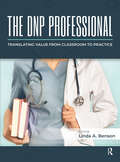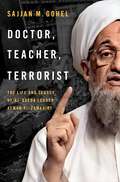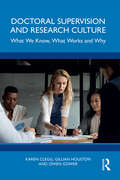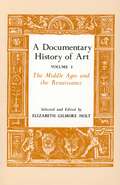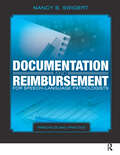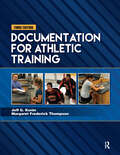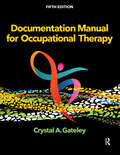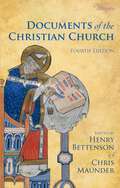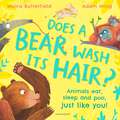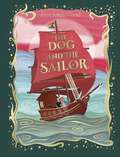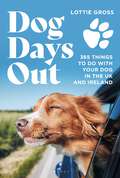- Table View
- List View
Diversität und Polizei: Perspektiven auf eine Polizei der Vielfalt – konkrete Handlungsoptionen und neue Reflexionsmöglichkeiten
by Mario S. Staller Swen KoernerIn dem Buch Diversität und Polizei werden verschiedene Perspektiven auf Vielfalt und Diversität im Kontext der Polizeiarbeit betrachtet. Die Beitragsautor:innen stammen aus dem Polizeialltag und der Wissenschaft. Daher kann dieses Werk wertvolle Erkenntnisse zum Thema Diversität in der Polizei sowohl für die praktische Handlungsebene also auch für wissenschaftliche Reflexionsmöglichkeiten bieten.Die Kapitel des Buches behandeln u.a. Themen wie den Migrationshintergrund als Diversitätsmerkmal bei Polizeianwärter:innen, die Herausforderungen und Chancen der Polizei in einer multiethnischen Gesellschaft, das Potenzial diverser Perspektiven auf illegitime Gewaltanwendung, geschlechtergerechte Sprache in der polizeilichen Kommunikation, die Spannung zwischen Persönlichkeitsrecht und Handhabbarkeit bei Personendurchsuchungen, die Stellung von queeren Personen in der Polizei und die geschlechtergerechte Begleitung von trans-, intergeschlechtlichen und non-binären Personendurch die Polizei sowie die Polizei als wahrgenommener Fluchtort vor der Diversity-Realität.Das Werk liefert damit einen fundierten Einblick in die Vielfaltsthemen innerhalb der Polizeiarbeit. Neben konkreten Handlungsoptionen im Polizeialltag regt es zur neuerlichen Reflexion über Diversität an. Es unterstützt so das Diversity-Management in der Polizei. Mit seinen aktuellen Forschungsergebnissen und den praxisrelevanten Beiträgen ist dieses Werk eine unverzichtbare Ressource für Polizeibeamt:innen als auch Wissenschaftler:innen, die sich mit dem Thema Diversität in der Polizei auseinandersetzen wollen.
The Divine Economy: How Religions Compete for Wealth, Power, and People
by Paul SeabrightA novel economic interpretation of how religions have become so powerful in the modern worldReligion in the twenty-first century is alive and well across the world, despite its apparent decline in North America and parts of Europe. Vigorous competition between and within religious movements has led to their accumulating great power and wealth. Religions in many traditions have honed their competitive strategies over thousands of years. Today, they are big business; like businesses, they must recruit, raise funds, disburse budgets, manage facilities, organize transportation, motivate employees, and get their message out. In The Divine Economy, economist Paul Seabright argues that religious movements are a special kind of business: they are platforms, bringing together communities of members who seek many different things from one another—spiritual fulfilment, friendship and marriage networks, even business opportunities. Their function as platforms, he contends, is what has allowed religions to consolidate and wield power.This power can be used for good, especially when religious movements provide their members with insurance against the shocks of modern life, and a sense of worth in their communities. It can also be used for harm: political leaders often instrumentalize religious movements for authoritarian ends, and religious leaders can exploit the trust of members to inflict sexual, emotional, financial or physical abuse, or to provoke violence against outsiders. Writing in a nonpartisan spirit, Seabright uses insights from economics to show how religion and secular society can work together in a world where some people feel no need for religion, but many continue to respond with enthusiasm to its call.
The Dixon Rule
by Elle KennedyThe second in the steamy, hilarious Campus Diaries series by New York Times bestselling author Elle Kennedy, set in the same world as Off Campus and Briar U.'I told them I had a girlfriend.'I start to laugh. 'This is the greatest day of my life.''Oh, it gets better, Dixon. I told them it was you.'Diana Dixon has a lot going on this summer. She's rehearsing for a ballroom dance competition, juggling two jobs, and dealing with an ex-boyfriend who can't take the hint it's over. Yet despite all that, she still has plenty of time and energy to tell Shane Lindley to screw off.Shane just moved into her apartment building and seems dedicated to sleeping his way through her entire cheerleading squad. Sure, he's a tall, gorgeous hockey player, but he's messing with her turf. This calls for some ground rules: no parties in her apartment, leave her teammates alone, and - most importantly - leave her alone.What Diana doesn't realize is that Shane's sick of hook-ups and tired of being on the rebound after his long-term girlfriend called it quits. He wants a relationship. And when his ex comes back into the picture, he pretends he has one to make her jealous . . . and who better to play the girlfriend role than his sassy new neighbour?Despite Diana's reluctance to break her rule, a fake relationship is the perfect solution for her own ex issues, and soon she can't deny something is sizzling between her and Shane. Something hot and completely unexpected.And it might just be getting a little too real.
DNA Barcoding: Methods and Protocols (Methods in Molecular Biology #2744)
by Robert DeSalleThis volume covers the latest advancements and methods used to study DNA barcoding. The chapters in this book are organized into six parts: theory, DNA manipulation, specialized barcoding methods, analysis of DNA barcodes, completing a successful DNA barcode project, and barcoding as citizen science. Part One looks at several theoretical issues in DNA barcoding concerned with DNA barcodes that can and should be used. Part Two discusses protocols for processing samples into DNA barcodes, including DNA isolation, sequencing and managing samples, and the resulting DNA barcodes. Part Three explores the next generation of DNA barcoding such as FRET-based detection, dual nanopore detection, skimming, and closed-tube methods. Part Four addresses programs and websites that handle DNA barcoding data, and includes character-based approaches, barcode gap methods, integrated approaches, and Barcode of Life Database. Part Five offers protocols for producing a successfulDNA barcoding project including plant and animal examples and protocols for generating a DNA Barcode Reference Library. Lastly, Part Six talks about several novel protocols for setting up an educational program using DNA barcodes. Written in the highly successful Methods in Molecular Biology series format, chapters include introductions to their respective topics, lists of the necessary materials and reagents, step-by-step, readily reproducible laboratory protocols, and tips on troubleshooting and avoiding known pitfalls.Cutting-edge and thorough, DNA Barcoding: Methods and Protocols encompasses a wide range of techniques and will be a useful reference tool for both scientist and student.
The DNP Professional: Translating Value from Classroom to Practice
by Linda BensonThe DNP Professional: Translating Value from Classroom to Practice is a collection of exemplars from DNP (Doctor of Nursing Practice) -prepared experts across various advanced practice nursing roles and settings. The content illustrates the application of the American Association of Colleges of Nursing’s “Essentials,” quantifies successful DNP-prepared practitioner outcomes, and describes the overall impact of the nursing practice doctorate. Each chapter is written by a different expert and focuses on how the Essentials relate to that author’s role, including business planning, evidence-driven decision making, data analytics, and interprofessional collaboration. These leaders demonstrate how to implement lessons learned in a DNP program and translate them into everyday practice in every nursing domain, with plenty of pearls to pass along. Editor Linda A. Benson has divided the book into sections based on roles and settings: • Nurse Practitioner • Clinical Nurse Specialist • Certified Registered Nurse Anesthetists • Nurse Midwife • Nurse Executive • Academia • Population Health • Informatics • Legislative Activity When performing at their peak, DNPs can affect clinical, satisfaction, and cost outcomes, as well as provide preceptorship and mentoring. With exemplars from across the continuum of practice sites and roles, The DNP Professional: Translating Value from Classroom to Practice enables both students and DNP graduates to optimize the curricular Essentials in the practice setting.
The DNP Professional: Translating Value from Classroom to Practice
by Linda BensonThe DNP Professional: Translating Value from Classroom to Practice is a collection of exemplars from DNP (Doctor of Nursing Practice) -prepared experts across various advanced practice nursing roles and settings. The content illustrates the application of the American Association of Colleges of Nursing’s “Essentials,” quantifies successful DNP-prepared practitioner outcomes, and describes the overall impact of the nursing practice doctorate. Each chapter is written by a different expert and focuses on how the Essentials relate to that author’s role, including business planning, evidence-driven decision making, data analytics, and interprofessional collaboration. These leaders demonstrate how to implement lessons learned in a DNP program and translate them into everyday practice in every nursing domain, with plenty of pearls to pass along. Editor Linda A. Benson has divided the book into sections based on roles and settings: • Nurse Practitioner • Clinical Nurse Specialist • Certified Registered Nurse Anesthetists • Nurse Midwife • Nurse Executive • Academia • Population Health • Informatics • Legislative Activity When performing at their peak, DNPs can affect clinical, satisfaction, and cost outcomes, as well as provide preceptorship and mentoring. With exemplars from across the continuum of practice sites and roles, The DNP Professional: Translating Value from Classroom to Practice enables both students and DNP graduates to optimize the curricular Essentials in the practice setting.
Do Women Entrepreneurs Practice a Different Kind of Entrepreneurship? (Emerald Points)
by Alison TheakerWhilst the number of women-owned enterprises has been increasing, they account for only 35% of business ownership in the UK. The term “woman entrepreneur” is suggested to be somewhat problematic, as it seems that women simply practise entrepreneurship, challenging the preconceptions people may have about businesses run by women. Do Women Entrepreneurs Practice a Different Kind of Entrepreneurship? identifies the entrepreneurship model of successful women entrepreneurs, and if they support or diverge from mainstream definitions. Alison Theaker examines female entrepreneurs’ experiences to understand whether their entrepreneurship practices conform to existing models, and whether the concept of “success” has different meanings for such businesses than in mainstream entrepreneurial theory.
Do Women Entrepreneurs Practice a Different Kind of Entrepreneurship? (Emerald Points)
by Alison TheakerWhilst the number of women-owned enterprises has been increasing, they account for only 35% of business ownership in the UK. The term “woman entrepreneur” is suggested to be somewhat problematic, as it seems that women simply practise entrepreneurship, challenging the preconceptions people may have about businesses run by women. Do Women Entrepreneurs Practice a Different Kind of Entrepreneurship? identifies the entrepreneurship model of successful women entrepreneurs, and if they support or diverge from mainstream definitions. Alison Theaker examines female entrepreneurs’ experiences to understand whether their entrepreneurship practices conform to existing models, and whether the concept of “success” has different meanings for such businesses than in mainstream entrepreneurial theory.
Do Your Own Thing
by Richard PhoenixDo Your Own Thing is a full-length work of non-fiction from artist and musician Richard Phoenix detailing his experiences of the best underground arts scene you've never heard of——Do Your Own Thing, a project run by learning disability arts organisation Heart n Soul. Looking at the transformative potential of working to support creative young people make the music and art they want to, this book contributes essential new voices, reflections and considerations to the established ideas of 'Do It Yourself' culture. Phoenix's book, written with a disarming and idiosyncratic voice, asks what our often reductive understanding of DIY aesthetics might mean in light of questions about access, support and who gives permission to whom to make art, guiding us through the kind of project only spoken about in funding reports and transforming it into a polyphonic, collaborative and joyful work of art.
Doctor, Teacher, Terrorist: The Life and Legacy of Al-Qaeda Leader Ayman al-Zawahiri
by Sajjan M. GohelFor over half a century, al-Qaeda leader Ayman al-Zawahiri repeatedly emerged from the shadows as a vengeful ideologue hell-bent on changing history. Dr. Sajjan M. Gohel provides the first definitive account of one of the world's most wanted terrorists. Having grown up in an illustrious Egyptian family of physicians, lawyers, clergy, and politicians, al-Zawahiri was originally destined to become a successful doctor. However, he chose to rebel against his own society which he deemed to have deviated from its religious identity. By forming his own terrorist group, al-Zawahiri dedicated his life to sedition and violent rebellion against the international order. Ayman al-Zawahiri led a life incomparable to anyone else. The Egyptian found himself in many of the places where history was being determined. His journey takes us across Egypt, Sudan, Afghanistan and Pakistan, as well as the United States and Russia. Through his close bond with Osama bin Laden, al-Zawahiri played a critical role in the evolution of al-Qaeda's ideology, recruitment, tactics, and strategy. With the deft touch of a teacher, al-Zawahiri delegated numerous murderous assignments globally. He engaged in the assassination of political leaders, sought to develop chemical and biological weapons, recruited double and triple agents, turned the tables on his enemies, and pioneered the use of new media technology to convey al-Qaeda's zealotry. In 2011, al-Zawahiri succeeded bin Laden, to become the head of al-Qaeda and sought to rebuild and reform his organisation whilst being aided by murky ties in Pakistan and Iran and his Taliban allies. Against the background of the Arab Spring and the West's departure from Afghanistan, al-Zawahiri left a deadly legacy for al-Qaeda's future for years to come.
Doctoral Supervision and Research Culture: What We Know, What Works and Why
by Karen Clegg Owen Gower Gillian HoustonDrawing on original survey data, reflective accounts, and case studies of supervisory practice in different disciplines, Doctoral Supervision and Research Culture explores the supervisor experience and demonstrates the craft, compassion and consistency required of supervisors in responding to different researcher’s needs.Based on empirical data and using the voice of research supervisors, the authors throw a spotlight on the challenges and opportunities supervisors face in supporting doctoral researchers through to successful PhD completion. This book acts as an invitation to institutions, funders, industry and academics to review what, and how they support PhD provision and to elevate the status of supervision practice. It shows how research cultures - disciplinary, institutional and individual - affect the supervisory experience and highlight the challenges that supervisors face, as well as the rewards that successful supervisory relationships bring. It is also a celebration of the contribution that doctoral researchers and all those who support research make to society. Designed to provide opportunities for sharing of practice across disciplines and the sector, Doctoral Supervision and Research Culture will be of interest to both new and experienced supervisors, to staff and researcher developers in institutions, and to funders, policy makers and senior management in universities who seek to improve and enhance the supervisory experience for all agents.
Doctoral Supervision and Research Culture: What We Know, What Works and Why
by Karen Clegg Owen Gower Gillian HoustonDrawing on original survey data, reflective accounts, and case studies of supervisory practice in different disciplines, Doctoral Supervision and Research Culture explores the supervisor experience and demonstrates the craft, compassion and consistency required of supervisors in responding to different researcher’s needs.Based on empirical data and using the voice of research supervisors, the authors throw a spotlight on the challenges and opportunities supervisors face in supporting doctoral researchers through to successful PhD completion. This book acts as an invitation to institutions, funders, industry and academics to review what, and how they support PhD provision and to elevate the status of supervision practice. It shows how research cultures - disciplinary, institutional and individual - affect the supervisory experience and highlight the challenges that supervisors face, as well as the rewards that successful supervisory relationships bring. It is also a celebration of the contribution that doctoral researchers and all those who support research make to society. Designed to provide opportunities for sharing of practice across disciplines and the sector, Doctoral Supervision and Research Culture will be of interest to both new and experienced supervisors, to staff and researcher developers in institutions, and to funders, policy makers and senior management in universities who seek to improve and enhance the supervisory experience for all agents.
A Documentary History of Art, Volume 1: The Middle Ages and the Renaissance
by Elizabeth Gilmore HoltAn illuminating one-volume compendium of primary documents on the art of medieval and Renaissance EuropeThis unique collection brings together notebooks, letters, treatises, and contracts dealing with the art of the Middle Ages and Renaissance, providing extraordinary insights into the personalities and conditions of the times and revealing the stylistic and philosophical concerns that evolved during these intensively creative eras. These documents, many of them available here in English for the first time, range from Raoul Glaber&’s famous 1003 treatise on the synthesis of old and new art forms to Durand&’s essay on Christian symbolism in art and the writings of Leonardo and Dürer on anatomy, perspective, and the recreation of reality. They trace how a medieval conception of life that was inspired, oriented, and dominated by the church evolved gradually into the great reawakening of the Renaissance in which humankind itself assumed primary importance in Western art.
Documentation and Reimbursement for Speech-Language Pathologists: Principles and Practice
by Nancy SwigertAlthough it is the least noticed by patients, effective documentation is one of the most critical skills that speech-language pathologists must learn. With that in mind, Documentation and Reimbursement for Speech-Language Pathologists: Principles and Practiceprovides a comprehensive guide to documentation, coding, and reimbursement across all work settings.The text begins with section 1 covering the importance of documentation and the basic rules, both ethical and legal, followed by an exploration of the various documentation forms and formats. Also included are tips on how to use electronic health records, as well as different coding systems for diagnosis and for procedures, with an emphasis on the link between coding, reimbursement, and the documentation to support reimbursement.Section 2 explains the importance of focusing on function in patient-centered care with the ICF as the conceptual model, then goes on to cover each of the types of services speech-language pathologists provide: evaluation, treatment planning, therapy, and discharge planning. Multiple examples of forms and formats are given for each.In section 3, Nancy Swigert and her expert team of contributors dedicate each chapter to a work setting in which speech-language pathologists might work, whether adult or pediatric, because each setting has its own set of documentation and reimbursement challenges. And since client documentation is not the only kind of writing done by speech-language pathologists, a separate chapter on “other professional writing” includes information on how to write correspondence, avoid common mistakes, and even prepare effective PowerPoint presentations.Each chapter in Documentation and Reimbursement for Speech-Language Pathologists contains activities to apply information learned in that chapter as well as review questions for students to test their knowledge. Customizable samples of many types of forms and reports are also available.Included with the text are online supplemental materials for faculty use in the classroom.Documentation and Reimbursement for Speech-Language Pathologists: Principles and Practice is the perfect text for speech-language pathology students to learn these vital skills, but it will also provide clinical supervisors, new clinicians, and speech-language pathologists starting a private practice or managing a department with essential information about documentation, coding, and reimbursement.
Documentation and Reimbursement for Speech-Language Pathologists: Principles and Practice
by Nancy SwigertAlthough it is the least noticed by patients, effective documentation is one of the most critical skills that speech-language pathologists must learn. With that in mind, Documentation and Reimbursement for Speech-Language Pathologists: Principles and Practiceprovides a comprehensive guide to documentation, coding, and reimbursement across all work settings.The text begins with section 1 covering the importance of documentation and the basic rules, both ethical and legal, followed by an exploration of the various documentation forms and formats. Also included are tips on how to use electronic health records, as well as different coding systems for diagnosis and for procedures, with an emphasis on the link between coding, reimbursement, and the documentation to support reimbursement.Section 2 explains the importance of focusing on function in patient-centered care with the ICF as the conceptual model, then goes on to cover each of the types of services speech-language pathologists provide: evaluation, treatment planning, therapy, and discharge planning. Multiple examples of forms and formats are given for each.In section 3, Nancy Swigert and her expert team of contributors dedicate each chapter to a work setting in which speech-language pathologists might work, whether adult or pediatric, because each setting has its own set of documentation and reimbursement challenges. And since client documentation is not the only kind of writing done by speech-language pathologists, a separate chapter on “other professional writing” includes information on how to write correspondence, avoid common mistakes, and even prepare effective PowerPoint presentations.Each chapter in Documentation and Reimbursement for Speech-Language Pathologists contains activities to apply information learned in that chapter as well as review questions for students to test their knowledge. Customizable samples of many types of forms and reports are also available.Included with the text are online supplemental materials for faculty use in the classroom.Documentation and Reimbursement for Speech-Language Pathologists: Principles and Practice is the perfect text for speech-language pathology students to learn these vital skills, but it will also provide clinical supervisors, new clinicians, and speech-language pathologists starting a private practice or managing a department with essential information about documentation, coding, and reimbursement.
Documentation Basics for the Physical Therapist Assistant (Core Texts for PTA Education)
by Mia Erickson Rebecca McKnightComplete and accurate documentation is one of the most important skills for a physical therapist assistant to develop and use effectively. The new Third Edition of Documentation Basics for the Physical Therapist Assistant continues the path of teaching the student and clinician documentation from A to Z. Mia Erickson and Rebecca McKnight have updated this Third Edition to reflect changes in the ever-evolving profession. Newly addressed are the changes in documentation requirements for major payers, changes in the disablement models used, and the increasingly common use of electronic documentation in the physical therapy profession. Features inside the Third Edition: Readers are encouraged to think about disablement and disablement concepts when writing notes How to document impairments in body structure and function but more importantly activity limitations and participation restriction Descriptions of the differences in documentation methods using a computer vs paper chart Evidence tied to benefits and challenges of computerized documentation Documenting the rationale for treatment and the unique skills of the physical therapist assistant in patient management New inside the Third Edition: Incorporation of the International Classification of Functioning, Disability, and Health disablement model Chapter on electronic documentation Screenshot examples of the popular WebPT® electronic medical record platform Updated chapters on reimbursement and legal issues Additional examples for student practice included in each chapter Included with the text are online supplemental materials for faculty use in the classroom. Documentation Basics for the Physical Therapist Assistant, Third Edition is the perfect guide for all physical therapist assistant students and clinicians who want to update and refine their knowledge and skills in documentation.
Documentation Basics for the Physical Therapist Assistant (Core Texts for PTA Education)
by Mia Erickson Rebecca McKnightComplete and accurate documentation is one of the most important skills for a physical therapist assistant to develop and use effectively. The new Third Edition of Documentation Basics for the Physical Therapist Assistant continues the path of teaching the student and clinician documentation from A to Z. Mia Erickson and Rebecca McKnight have updated this Third Edition to reflect changes in the ever-evolving profession. Newly addressed are the changes in documentation requirements for major payers, changes in the disablement models used, and the increasingly common use of electronic documentation in the physical therapy profession. Features inside the Third Edition: Readers are encouraged to think about disablement and disablement concepts when writing notes How to document impairments in body structure and function but more importantly activity limitations and participation restriction Descriptions of the differences in documentation methods using a computer vs paper chart Evidence tied to benefits and challenges of computerized documentation Documenting the rationale for treatment and the unique skills of the physical therapist assistant in patient management New inside the Third Edition: Incorporation of the International Classification of Functioning, Disability, and Health disablement model Chapter on electronic documentation Screenshot examples of the popular WebPT® electronic medical record platform Updated chapters on reimbursement and legal issues Additional examples for student practice included in each chapter Included with the text are online supplemental materials for faculty use in the classroom. Documentation Basics for the Physical Therapist Assistant, Third Edition is the perfect guide for all physical therapist assistant students and clinicians who want to update and refine their knowledge and skills in documentation.
Documentation for Athletic Training
by Jeff G. Konin Margaret Frederick ThompsonDocumentation for Athletic Training, Third Edition provides all the important and relevant information that a practicing athletic trainer needs to possess to provide accurate documentation. These topics include legal considerations, electronic medical records, and numerous tips for effective verbal and written communication styles. This Third Edition by Drs. Jeff G. Konin and Margaret Frederick Thompson continues to provide a plethora of standard templates to refer to as examples of the most commonly used forms in athletic training practice settings. The authors represent decades of collective experience as clinicians, educators, and administrators and offer insight on the importance of timely and appropriate methods for athletic training documentation.Documentation for Athletic Training, Third Edition has strengthened chapters on electronic documentation and documentation for reimbursement. These are continuously-evolving areas that require an understanding of not just a single type of software system, but rather a foundation of knowledge related to the principles of each. Additionally, a chapter has been added on contemporary type of documentation. Communication in the forms of text messages, social media, and other common types of information sharing are discussed. Features inside the Third Edition: Learning objectives for each chapter “Pearls of Wisdom” on key points Discussion and study questions Worksheets and commonly used documentation forms Glossary of terms Symbols and medical terminology abbreviations Documentation for Athletic Training, Third Edition continues to be the only textbook dedicated to the topic of documentation and presents a wide array of methods and forms, providing students, educators, and clinicians with a multifaceted tool box for their documentation needs.
Documentation for Athletic Training
by Jeff G. Konin Margaret Frederick ThompsonDocumentation for Athletic Training, Third Edition provides all the important and relevant information that a practicing athletic trainer needs to possess to provide accurate documentation. These topics include legal considerations, electronic medical records, and numerous tips for effective verbal and written communication styles. This Third Edition by Drs. Jeff G. Konin and Margaret Frederick Thompson continues to provide a plethora of standard templates to refer to as examples of the most commonly used forms in athletic training practice settings. The authors represent decades of collective experience as clinicians, educators, and administrators and offer insight on the importance of timely and appropriate methods for athletic training documentation.Documentation for Athletic Training, Third Edition has strengthened chapters on electronic documentation and documentation for reimbursement. These are continuously-evolving areas that require an understanding of not just a single type of software system, but rather a foundation of knowledge related to the principles of each. Additionally, a chapter has been added on contemporary type of documentation. Communication in the forms of text messages, social media, and other common types of information sharing are discussed. Features inside the Third Edition: Learning objectives for each chapter “Pearls of Wisdom” on key points Discussion and study questions Worksheets and commonly used documentation forms Glossary of terms Symbols and medical terminology abbreviations Documentation for Athletic Training, Third Edition continues to be the only textbook dedicated to the topic of documentation and presents a wide array of methods and forms, providing students, educators, and clinicians with a multifaceted tool box for their documentation needs.
Documentation Manual for Occupational Therapy
by Crystal GateleyThe best-selling, newly updated occupational therapy textbook Documentation Manual for Occupational Therapy, Fifth Edition, is made for students and early-career practitioners learning the critical skill of documentation. The workbook format offers students ample opportunities to practice writing occupation-based problem statements and goals, intervention plans, SOAP notes, and other forms of documentation. The Fifth Edition has also been updated to reflect changes in the American Occupational Therapy Association’s Occupational Therapy Practice Framework: Domain and Process, Fourth Edition. What’s included in Documentation Manual for Occupational Therapy:• Numerous worksheets for students to practice individual skills with suggested answers provided in the Appendix• Updated information on coding, billing, and reimbursement to reflect recent Medicare changes, particularly in post–acute care settings• Examples from a variety of contemporary occupational therapy practice settings Included with the text are online supplemental materials for faculty use in the classroom. Instructors in educational settings can visit the site for an Instructor’s Manual with resources to develop an entire course on professional documentation or to use the textbook across several courses. One of the most critical skills that occupational therapy practitioners must learn is effective documentation to guide client care, communicate with colleagues, and maximize reimbursement. The newly updated and expanded Documentation Manual for Occupational Therapy, Fifth Edition, will help students master their documentation skills before they ever step foot into practice.
Documentation Manual for Occupational Therapy
by Crystal GateleyThe best-selling, newly updated occupational therapy textbook Documentation Manual for Occupational Therapy, Fifth Edition, is made for students and early-career practitioners learning the critical skill of documentation. The workbook format offers students ample opportunities to practice writing occupation-based problem statements and goals, intervention plans, SOAP notes, and other forms of documentation. The Fifth Edition has also been updated to reflect changes in the American Occupational Therapy Association’s Occupational Therapy Practice Framework: Domain and Process, Fourth Edition. What’s included in Documentation Manual for Occupational Therapy:• Numerous worksheets for students to practice individual skills with suggested answers provided in the Appendix• Updated information on coding, billing, and reimbursement to reflect recent Medicare changes, particularly in post–acute care settings• Examples from a variety of contemporary occupational therapy practice settings Included with the text are online supplemental materials for faculty use in the classroom. Instructors in educational settings can visit the site for an Instructor’s Manual with resources to develop an entire course on professional documentation or to use the textbook across several courses. One of the most critical skills that occupational therapy practitioners must learn is effective documentation to guide client care, communicate with colleagues, and maximize reimbursement. The newly updated and expanded Documentation Manual for Occupational Therapy, Fifth Edition, will help students master their documentation skills before they ever step foot into practice.
Documents of the Christian Church
by Henry Bettenson Chris MaunderThis selection of writings from the most important moments in the history of Christianity has become established as a classic reference work, providing insights into 2000 years of Christian theological and political debate. While retaining the original material selected by Henry Bettenson, Chris Maunder has added a substantial section of more recent writings. These illustrate the Second Vatican Council; the theologies of liberation; Church and State from 'Thatcher's Britain' to Communist Eastern Europe; Black, feminist, and ecological theology; ecumenism; and inter-faith dialogue. The emphasis on moral debate in the contemporary churches is reflected in selections discussing questions about homosexuality, divorce, AIDS, and in-vitro fertilization, amongst other issues. This further expanded fourth edition brings the anthology up-to-date with a new section looking at issues facing the twenty-first century churches. This includes extracts exploring the churches' responses to questions of social justice, international politics, trade and debt, environmental change, and technological development. New material also covers the global growth of Christianity, the progress of Christian unity, and mission in multi-faith and postmodern societies.
Does a Bear Wash its Hair?: Animals eat, sleep and poo, just like you!
by Moira ButterfieldLearn all about the incredible daily routines of animals in this bright, fact-packed sequel to Does a Monkey Get Grumpy?Did you know that some crabs get dressed? Or that young meerkats have to go to 'school'? Or that sloths have very particular pooping habits?From brave plover birds who clean crocodile teeth, to orangutans who make cosy treetop beds, animals have the most fascinating routines - just like us! Whether they're keeping clean or using tools to catch their dinner, explore the daily habitats of 15 animals across the planet - including sloths, meerkats, alpacas, wolves, foxes, crabs and more. With bouncy rhythmic text and fascinating facts, this book will help children identify daily activities, while teaching them how very similar the lives of humans and animals really are.
The Dog and the Sailor
by Pete Jordi WoodFrom talented debut picture-book maker Pete Jordi Wood, this is a forgotten fairytale filled with magic and adventure. With stunning illustrations that evoke Mary Blair and classic Disney, this is the perfect gift for children of four and above - or for any fairytale fan.As one of very few examples of a fairytale that celebrates LGBTQ+ romance the book is an important example of representation, celebrating lives that are too often excluded from mainstream storytelling. The story is being developed into a film.
Dog Days Out: 365 things to do with your dog in the UK and Ireland
by Lottie GrossA dog-owner's bible for a wealth of fun, welcoming and quirky adventures in the UK and Ireland.A staggering one third of British households now own a dog as a pet, meaning dog-friendly days out and weekend trips are becoming ever more popular. Finding reliable and comprehensive information on dog-friendly activities, though, is getting harder thanks to the deluge of online content, much of which doesn't offer in-depth information on the kinds of things dog owners need to know. Dog Days Out solves that problem, offering 365 ideas for things to do around the UK with your four-legged friend, such as long rambles in the countryside, brilliant beaches to play fetch on, and exciting attractions and quirky accommodation options. From the rugged countryside of Ireland and Northern Ireland to the beaches of Cornwall, Kent and the Scottish Highlands, plus castles, country houses and cracking walks to be had in between, this book will provide an abundance of ideas for an hour, half a day or a whole day out to suit all weathers. Gorgeous maps and beautiful photography make this both an aspirational and endlessly useful read. The long list of brilliant activities is accompanied by essential practical information for dog owners, such as local bylaws, rules for dogs, wildlife to be aware of, safety tips, solo travel with dogs, activities with reactive dogs, and accessible dog days out.
